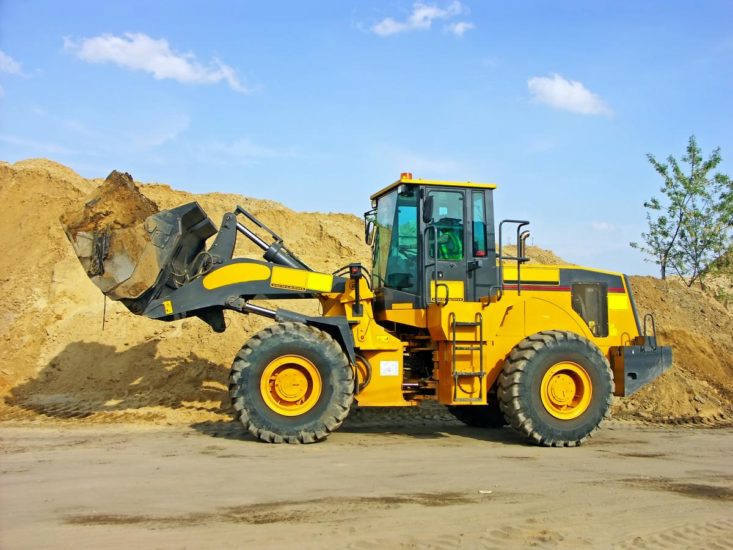Leasing Vs. Purchasing Building And Construction Tools: Making the Right Selection for Your Project
When starting a building and construction job, one of the essential decisions that predict stakeholders and supervisors encounter is whether to rent or get construction equipment. Both options have their benefits and disadvantages, making the selection a critical one in the job planning procedure. The choice rests on various elements such as expense factors to consider, job period, equipment maintenance, danger, flexibility, and scalability monitoring. Each aspect plays an important duty in determining one of the most ideal path for the task's equipment needs. scissor lift rental. Allow's explore these elements further to comprehend exactly how they affect the decision-making process and eventually the success of the job.
Expense Considerations
When reviewing the economic aspect of renting out versus purchasing building and construction devices, the lasting expenses and in advance prices should be carefully thought about. Renting out devices often calls for reduced preliminary repayments contrasted to buying, making it an eye-catching choice for temporary projects or specialists with spending plan restraints. Renting gets rid of the demand for big resources outlays and reduces the monetary danger related to equipment possession, such as maintenance and depreciation prices. However, in the future, continuously leasing tools can collect greater expenses than purchasing, specifically for extended tasks.
On the various other hand, purchasing construction devices entails higher upfront costs yet can result in long-term financial savings, especially for frequent individuals or long-term tasks. Ultimately, the choice in between purchasing and leasing building and construction equipment hinges on the task's duration, regularity of use, spending plan considerations, and long-term financial objectives.
Job Period

Conversely, for lasting jobs or recurring building job, buying equipment might be the much more affordable choice. Buying tools can cause cost financial savings over time, particularly if the equipment will certainly be regularly used. In addition, owning tools provides a sense of control over its availability and enables for personalization to fit particular job needs.

Devices Upkeep
Given the vital role project period plays in determining the most cost-effective method in between renting and getting building and construction devices, the focus now moves towards checking out the important element of tools maintenance. Proper maintenance is vital for ensuring the optimal performance and long life of construction devices. Renting equipment typically includes the benefit of having well-maintained machinery provided by the rental business. This can alleviate the problem of maintenance tasks from the project proprietor or specialist, saving time and initiative. On the various other hand, owning tools needs a proactive strategy to maintenance to prevent malfunctions, make sure security, and extend the devices's life-span. Routine evaluations, servicing, and timely repairs are required to maintain owned and operated tools in top working condition. Factor in upkeep expenses when making a decision between purchasing and leasing, as ignoring upkeep can result in expensive fixings, downtime, and task hold-ups. Ultimately, a properly maintained building and construction devices fleet, whether leased or possessed, is important for the efficient and effective completion of building projects.
Versatility and Scalability
In the realm of construction tools management, construction scaffolding for sale the facet of versatility and scalability holds significant value for task effectiveness and source usage. Choosing to rent out building devices provides a high level of flexibility as it permits for the quick modification of devices kinds and amounts based on the advancing needs of a task.
Moreover, scalability, another important aspect, is inherently connected to versatility. Leasing building and construction devices uses the advantage of conveniently scaling operations up or down as job needs vary. Specialists can swiftly include or exchange devices to match the task's altering needs without the restraints of possessing assets that may become underutilized or outdated. This capability to range sources successfully can lead to expense savings and improved project timelines, making renting out a favorable choice for projects needing adaptability and responsive resource appropriation.
Risk Management
Efficient risk management in building devices procedures is vital to ensuring job success and mitigating potential monetary losses. Building and construction jobs inherently involve different threats, such as devices malfunctions, mishaps, and project hold-ups, which can considerably affect the project timeline and budget plan. By meticulously thinking about the dangers related to owning or renting construction tools, job managers can make educated choices to decrease click for info these potential risks.
Leasing building and construction tools can use a degree of risk reduction by transferring the responsibility of upkeep and repairs to the rental company. This can lower the economic burden on the job proprietor in situation of unforeseen devices failings (construction equipment rentals). Additionally, renting supplies the flexibility to gain access to customized tools for details job stages, reducing the threat of having underutilized equipment
On the various other hand, possessing building tools offers a sense of control over its usage and maintenance. Nevertheless, this likewise suggests bearing the complete obligation for repair work, maintenance costs, and devaluation, raising the monetary threats connected with equipment possession. Mindful danger evaluation and consideration of elements such as task duration, tools use, and upkeep requirements are vital in determining one of the most ideal alternative for effective risk monitoring in building and construction projects.
Verdict
In conclusion, when deciding between buying and leasing building and construction tools, it is essential to take into consideration price, project period, devices upkeep, danger, scalability, and versatility administration. Each factor plays an essential role in identifying one of the most appropriate alternative for the task available. By carefully examining these facets, task managers can make an educated decision that aligns with their budget, timeline, and total task goals.
